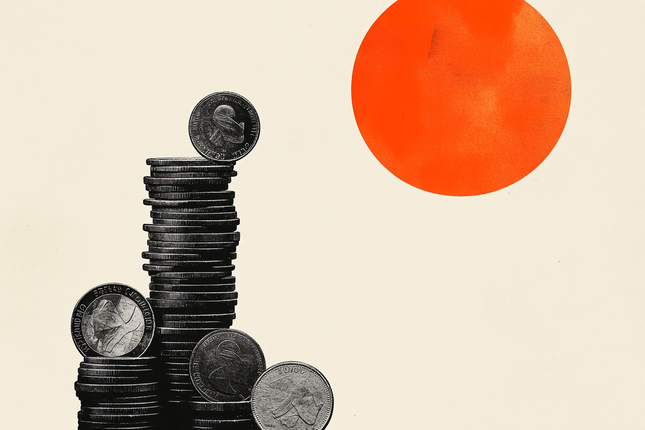“If something can’t go on forever, it will stop.” I wish I could take credit for that line, but I can’t. It’s attributable to Herbert Stein, who was the Chairman of the Council of Economic Advisors in both the Nixon and Ford administrations. This pithy aphorism informs a lot of my thinking with respect to stock selection. A second notion that also has considerable weight with me is the idea that when a stock price changes — or the price of virtually anything, for that matter — it’s very difficult to know whether that change reflects the start or continuation of a trend, or whether that change is going to be a temporary aberration soon to be reversed. People guess about which one of these alternatives applies and invest accordingly. When they’re right they win; when they’re wrong, they lose.
Putting these foundational ideas aside for the moment, stock market investors often divide between those who look for stocks that have been appreciating — essentially betting that the recent trend will continue — versus those who look to find the unfound gems that are undervalued and thus represent particularly good prospects for appreciation in the future. In fact, common parlance labels the first category of investors as those who would seek to buy growth stocks and the second category as those who would favor value stocks. Secondarily, the history of appreciation informs our sensibilities about expectations for future price appreciation. Generally, I think it’s safe to say that the expected appreciation for growth stocks is likely to be higher than that for value stocks, albeit with greater volatility (i.e., risk). It’s a subjective judgment as to where an investor should position him or herself on this risk/return spectrum.
With the growth versus value distinction in mind, it should be understood that at the initial point of designation, a growth stock would have generally outperformed a value stock in terms of total return over some relatively recent history, but Herbert Stein’s quote warns us that this outperformance can’t go on forever. At least theoretically, appreciation for the growth stock could reverse and the price of the value stock could advance to the point that both stocks could fall out of their originally designated categories.
It’s fairly typical for naïve or unsophisticated investors to be seduced into entering into an investment because of a history of extraordinary price appreciation — more likely to happen in the case of a growth stock. Here, the motivation underlying the investment is often the fear of missing out (FOMO), as opposed to any rigorous assessment of risk and reward; and all too often, the consequences are sobering. In any case, this phenomenon of FOMO investing certainly contributes to the price volatility that we see associated with highly-visibility investments — i.e., stocks that receive considerable attention in response to extraordinary (and, again, unsustainable) market advances. Psychologically, people who’ve entered the market prior to any significant price increases may not feel so bad about returning even substantial portions of their unrealized gains; but this comfort level in the face of a market decline wouldn’t be shared by those who entered their positions at more elevated prices.
The sweet spot in picking stocks, of course, is identifying a stock that shows attractive earnings growth (and seemingly solid growth potential), but where the stock appears to be undervalued relative to those earnings projections. More power to you if you can make this assessment correctly and consistently, but it’s no easy task, as reflected by professional investors who, historically, have shown little success in consistently outperforming the total return of S&P 500 index over time — i.e., the well-accepted benchmark of stock market performance.
Last year happened to be a particularly good year for active fund managers. Even so, in the first half of the year, with just under half of large-cap managers managed to beat the index. This performance, however, turns out to have been highly unusual. S&P Dow Jones Indices reports that only about 10 percent of actively managed funds outperformed this benchmark index.
Arguably, this history of pervasive poor performance on the part of professional managers is the most substantive justification to rely most heavily on investment products that mimic the S&P500 index (i.e., mutual funds and exchange traded funds) for the lion’s share of any investment portfolio, relegating individual stock selection to only a small portion of your portfolio’s composition — if any.
Derivatives Litigation Services assists legal teams with litigation when derivative contracts play a role in disputed transactions. The firm offers advice and counsel on a best efforts basis but bears no responsibility for outcomes dictated by mediation or court judgments.
Editors’ Picks

EUR/USD Price Annual Forecast: Growth to displace central banks from the limelight in 2026 Premium
What a year! Donald Trump’s return to the United States (US) Presidency was no doubt what led financial markets throughout 2025. His not-always-unexpected or surprising decisions shaped investors’ sentiment, or better said, unprecedented uncertainty.

US Dollar Price Annual Forecast: 2026 set to be a year of transition, not capitulation Premium
The US Dollar (USD) enters the new year at a crossroads. After several years of sustained strength driven by US growth outperformance, aggressive Federal Reserve (Fed) tightening, and recurrent episodes of global risk aversion, the conditions that underpinned broad-based USD appreciation are beginning to erode, but not collapse.

GBP/USD Price Annual Forecast: Will 2026 be another bullish year for Pound Sterling? Premium
Having wrapped up 2025 on a positive note, the Pound Sterling (GBP) eyes another meaningful and upbeat year against the US Dollar (USD) at the start of 2026.

Gold Price Annual Forecast: 2026 could see new record-highs but a 2025-like rally is unlikely Premium
Gold hit multiple new record highs throughout 2025. Trade-war fears, geopolitical instability and monetary easing in major economies were the main drivers behind Gold’s rally.

Top 10 crypto predictions for 2026: Institutional demand and big banks could lift Bitcoin
Bitcoin’s (BTC) adoption story is unraveling and the king crypto could see institutional demand return in 2026. Crypto asset managers like Grayscale are betting on Bitcoin’s rally to a new all-time high next year, and themes like Bitcoin as a reserve asset are emerging.
RECOMMENDED LESSONS
Making money in forex is easy if you know how the bankers trade!
I’m often mystified in my educational forex articles why so many traders struggle to make consistent money out of forex trading. The answer has more to do with what they don’t know than what they do know. After working in investment banks for 20 years many of which were as a Chief trader its second knowledge how to extract cash out of the market.
5 Forex News Events You Need To Know
In the fast moving world of currency markets where huge moves can seemingly come from nowhere, it is extremely important for new traders to learn about the various economic indicators and forex news events and releases that shape the markets. Indeed, quickly getting a handle on which data to look out for, what it means, and how to trade it can see new traders quickly become far more profitable and sets up the road to long term success.
Top 10 Chart Patterns Every Trader Should Know
Chart patterns are one of the most effective trading tools for a trader. They are pure price-action, and form on the basis of underlying buying and selling pressure. Chart patterns have a proven track-record, and traders use them to identify continuation or reversal signals, to open positions and identify price targets.
7 Ways to Avoid Forex Scams
The forex industry is recently seeing more and more scams. Here are 7 ways to avoid losing your money in such scams: Forex scams are becoming frequent. Michael Greenberg reports on luxurious expenses, including a submarine bought from the money taken from forex traders. Here’s another report of a forex fraud. So, how can we avoid falling in such forex scams?
What Are the 10 Fatal Mistakes Traders Make
Trading is exciting. Trading is hard. Trading is extremely hard. Some say that it takes more than 10,000 hours to master. Others believe that trading is the way to quick riches. They might be both wrong. What is important to know that no matter how experienced you are, mistakes will be part of the trading process.
The challenge: Timing the market and trader psychology
Successful trading often comes down to timing – entering and exiting trades at the right moments. Yet timing the market is notoriously difficult, largely because human psychology can derail even the best plans. Two powerful emotions in particular – fear and greed – tend to drive trading decisions off course.


